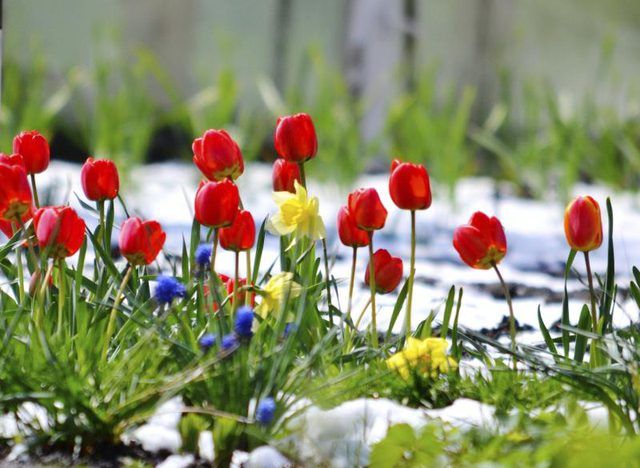Bulbs
Flower Basics
Flower Beds & Specialty Gardens
Flower Garden
Garden Furniture
Garden Gnomes
Garden Seeds
Garden Sheds
Garden Statues
Garden Tools & Supplies
Gardening Basics
Green & Organic
Groundcovers & Vines
Growing Annuals
Growing Basil
Growing Beans
Growing Berries
Growing Blueberries
Growing Cactus
Growing Corn
Growing Cotton
Growing Edibles
Growing Flowers
Growing Garlic
Growing Grapes
Growing Grass
Growing Herbs
Growing Jasmine
Growing Mint
Growing Mushrooms
Orchids
Growing Peanuts
Growing Perennials
Growing Plants
Growing Rosemary
Growing Roses
Growing Strawberries
Growing Sunflowers
Growing Thyme
Growing Tomatoes
Growing Tulips
Growing Vegetables
Herb Basics
Herb Garden
Indoor Growing
Landscaping Basics
Landscaping Patios
Landscaping Plants
Landscaping Shrubs
Landscaping Trees
Landscaping Walks & Pathways
Lawn Basics
Lawn Maintenance
Lawn Mowers
Lawn Ornaments
Lawn Planting
Lawn Tools
Outdoor Growing
Overall Landscape Planning
Pests, Weeds & Problems
Plant Basics
Rock Garden
Rose Garden
Shrubs
Soil
Specialty Gardens
Trees
Vegetable Garden
Yard Maintenance
How to Clean Up Your Yard for Spring
How to Clean Up Your Yard for Spring. If you've been kicking your heels while waiting for the growing season to begin, then you can do plenty to clean up your yard for spring, including tidying hardscaping, pruning and removing plant debris. If you live in a cold zone, start removing winter protection from plants when the worst of the bad weather...

If you've been kicking your heels while waiting for the growing season to begin, then you can do plenty to clean up your yard for spring, including tidying hardscaping, pruning and removing plant debris. If you live in a cold zone, start removing winter protection from plants when the worst of the bad weather is over; if you are in a warm zone, get a head-start on weeding. Before and after pruning foliage, stems and branches, sterilize your pruning tools by wiping their blades with a cloth soaked in rubbing alcohol. Otherwise, the tools may spread plant diseases. Avoid stepping on your garden beds where possible because doing so compacts moist, soft soil.
Refurbishing Hardscaping
Hardscaping can be cleaned when the weather begins to warm in early spring. Winter weather can play havoc with gravel and flagstone paths and patios, and hard surfaces often become slippery with algae. On a dry day, rake escaped gravel back onto walkways, driveways or its other proper homes, or replace gravel in areas that developed hollows. Brush new sand or stone dust between flagstones and pavers if heavy rains and frosts left empty spots. Wetting the sand or stone dust with water applied from a garden hose's soft spray attachment prevents washing away the new mortar. Wash away leaf stains on hardscaping and slippery areas coated with algae, using a pressure washer with a low-pressure tip.
Tidying Garden Beds
Cleaning up your garden beds in early spring will help control weeds and clear the way for fresh growth on ornamental grasses and other perennials. In a cold zone, mulches and other winter protection can be removed from perennials when most of the snow has melted and temperatures are usually above freezing. Don't remove mulch covering bare soil because beneficial insects often lay their eggs in mulch and leaves on the garden floor. When temperatures are usually in the low 40s F, prune ornamental grasses to 2 or 3 inches tall, and prune foliage on other perennials to 4 to 5 inches tall. If the perennials carry seeds or fruits that feed wildlife, then place their pruned stems in a pile in a remote corner of your yard. Perennials that have become lifted out of the soil can be firmed back into place or dug up and replanted them. When the ground is soft, dig up weeds with a garden trowel, removing as much of their root systems as possible. Take care not to damage desirable plants' emerging shoots when working in your gardens.
Pruning Shrubs and Trees
Many kinds of shrubs and trees in all U.S. Department of Agriculture plant hardiness zones benefit from being pruned in early spring. In cold-winter areas, burlap used as cold protection can be removed from trees and shrubs when temperatures are usually above freezing. Prune summer- and fall-flowering shrubs and trees, removing their dead, diseased and crossing stems and branches. A handsaw should be used to remove branches thicker than 1/2 inch in diameter. Prune beautyberry (Callicarpa americana), which is hardy USDA zones 6 through 10, panicle hydrangea (Hydrangea paniculata, USDA zones 3 through 8) and other shrubs that bloom on new wood to one-half their original size, cutting each stem just above an outward-facing bud. Don't prune spring-flowering shrubs, such as azalea (Rhododendron spp., USDA zones 4 through 9) and forsythia (Forsythia spp., USDA zones 4 through 8), however, because doing so will remove their flower stems.
Preparing Grass
Raking your lawn grass in early spring will help the grass grow strongly. Plant debris and dead grass build up in a lawn during winter, and winter snow can create conditions in which grass diseases thrive. Wait until your lawn's soil thaws and dries before you walk on the lawn to rake it. If the lawn and soil seem soft and spongy when you walk on them, then postpone raking until another day. Rake up fallen leaves and other plant debris with a lawn rake to prevent the debris from damaging the grass and creating yellow patches, and rake out dead or diseased grass with a square metal rake. Early spring is also a good time for removing thatch, which is a layer of dried grass clippings and other plant debris that accumulates at the base of lawn grass during each year. Thatch can be removed with a dethatcher, which is a machine with vertical tines that pull up thatch.